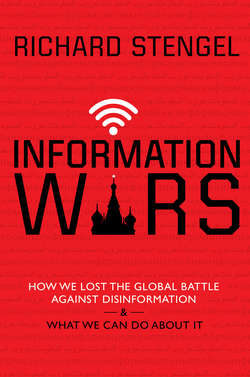Читать книгу Information Wars - Richard Stengel - Страница 27
На сайте Литреса книга снята с продажи.
The Birth of Counter-Messaging
ОглавлениеWhen I first looked at the structure of R and the bureaus underneath it, one piece didn’t seem to fit: CSCC, the Center for Strategic Counterterrorism Communications. All the other parts—Public Affairs, Educational and Cultural Affairs, International Information Programs—had been cobbled together from the 1999 legislation that created the office of public diplomacy, but CSCC was new. It had been created in 2010 by Secretary Hillary Clinton in collaboration with CIA chief Leon Panetta to combat the communications of a radical terrorist group that was using revolutionary new techniques to get out its message: al-Qaeda. Remember, this was 2010. Al-Qaeda had shot videos of Ayman al-Zawahiri sitting on a hillside in Pakistan giving a jihadist lecture directly to the camera for 54 minutes. They then uploaded that video to YouTube, where it got a few thousand views. That was cutting-edge back then.
The genesis of CSCC occurred at a Situation Room meeting in 2010. The U.S.’s drone war against terrorists was having success on the ground but wounding the image of America abroad. At that meeting, State’s coordinator for counterterrorism pitched the idea of an information war room to combat terrorist messaging and help America’s image in the process. According to observers, Obama replied, “Why haven’t we been doing that already?”
That was enough to launch the idea, and Secretary Clinton came up with a plan for a small, nimble entity that could coordinate across the government to counter al-Qaeda’s media in real time. It would live at the State Department but essentially be an interagency group staffed from across the government. Executive Order 13584, issued on September 15, 2011—about a year after that first Situation Room discussion—established the CSCC “to coordinate, orient, and inform government-wide foreign communications activities targeted against terrorism and violent extremism, particular al-Qaida and its affiliates.”3
From the moment of its birth, CSCC was a problem child. It was underfunded, its mission was poorly understood, and it became an orphan within the State Department. The National Security Council sought to manage it. The Department of Defense resented it. And Foreign Service officers avoided it. It was originally seen not as an entity that created content, but one that helped coordinate and inform other entities in government about what al-Qaeda was up to on social media. At the time, there was also a fight about where it would be situated at State. Counterterrorism wanted it, so did R. R won, but it was never a perfect fit.
Within the first year, CSCC had grown to about 40 people, with its most visible part something called the Digital Outreach Team (DOT—another awful acronym), which engaged in online debate about violent extremism. About 20 people worked on the team and created content in three languages: Arabic, Urdu, and Somali. Their motto was “Contest the space,” and the idea was to target so-called fence-sitters, young men who might be considering joining al-Qaeda. The messaging tried to create doubt in these young men by telling them that al-Qaeda was killing Muslims and that if they went to fight, they were likely to be killed themselves.
The head of CSCC was Alberto Fernandez, a former ambassador to Equatorial Guinea who had also been a U.S. spokesperson in Iraq during the Iraq War. Alberto had fluent Arabic, a dark mustache, and a crafty manner. He was an expert in the history of violent extremist organizations and could tell you how al-Qaeda and Jabhat al-Nusra disagreed about toothbrushing hadiths.
I had first met with Alberto before I was confirmed, to better understand CSCC. He walked me through what they were doing. They seemed very focused on the inside baseball of al-Qaeda politics. He proudly showed me examples of how al-Qaeda’s own messengers attacked CSCC online and tried to take down CSCC’s Twitter handle. It was clear he thought that being attacked by al-Qaeda was a sign of CSCC’s effectiveness. I wasn’t so sure.
Alberto mentioned that in spring 2012, they had noticed another organization that had formed in the area, the Islamic State of Iraq and the Levant, which was fighting Bashar al-Assad. (The Levant was the historical region of Syria and the countries of the eastern Mediterranean.) They noticed that ISIS, as he called it, began to increase its influence in rebel-held areas in 2013 through an interesting mix of charity and intimidation. It helped the poor but brutally punished anyone for violating sharia law and was virulently anti-Shia. In early 2013, he said, this organization began warning its followers that the U.S. State Department was trying to sow dissent among jihadis. ISIS was the coming thing, he said.
